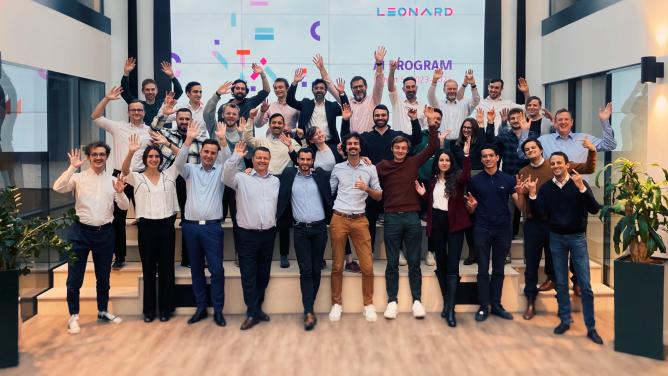A culture of prevention
Over the past few years, advances in management, regulations and procedures have helped establish a culture of prevention and reduce the number of accidents in the construction industry. Not only that, technological innovation has played a part too, especially when it comes to personal protective equipment (PPE). At the forefront of new technology, helmets, glasses, boots and gloves come integrated with IoT, augmented reality, geolocation technology or AI. They are capable of informing the user about their environment, and communicate data to a control centre. On a worksite, image analysis is developing thanks to drones and smart cameras. These solutions mean inspections and diagnostics can be automated in real time. We’re seeing a growth in low tech tools too, such as the Perche Beky, a tool enabling you to clean your roof while remaining on the ground and thus reducing the risk of falling. Which just goes to show, when finding solutions to needs, tried and tested solutions are always the best.
Culture du “zéro accident” – VINCI Construction
Advanced technologies continue to revolutionize the hardhat – ForConstructionPros
L’innovation au service de la sécurité des acteurs du chantier – Construction 21
AI could help the construction industry work faster and keep its workforce accident free – MIT Technology Review
Intsite raises 1,35 million for autonomes cranes – VentureBeat
Targeting chronic diseases and psychosocial risks
Despite growing concern in the construction industry, awareness surrounding chronic diseases is increasing. These are problems that can appear or worsen depending on onsite working conditions. Musculoskeletal disorders are the leading cause of chronic diseases in the sector. Affecting joints, muscles and tendons, they are linked to physical activity and work system setup on a construction site. While best practices have become widespread, recent developments in automation and industrialization in construction can take worker protection to another level. In fact, exoskeletons and devices, prefabrication in the workshop, and even 3D concrete printing all contribute to reducing dangerous and tiring tasks. Exposure to noise or chemicals is also a source of occupational disease.
We’re hearing more and more about psychosocial disorders. According to construction sites, worker isolation can lead to psychological problems, aggravated by lack of job security or stress. Prevention is also making headway in these areas, thanks to awareness raising and having access to skilled healthcare professionals. In 2019, Ground Engineering magazine awarded Hinkley Point C EPR construction site for its efforts in mental illness prevention.
3D printing in construction – Designing Buildings Wiki
La construction modulaire va établir un record mondial de hauteur en Europe – Les Echos
How exoskeletons are changing the construction industry – Ekso Bionics
Health and Safety Award – Ground Engineering
Why do so many construction workers kill themselves? – The Guardian
Les risques chimiques dus aux produits manufacturés – Prévention BTP
Heras noise control barrier 2.0 – Mobile Fencing Security
New systemic risks
Knowledge around new systemic risks has grown in recent years. The Covid epidemic has, of course, forced the sector to confront issues surrounding social distancing. New protocols have been implemented and are regularly updated, along with the arrival of a few innovative solutions such as the Smartvid and Triax connected tools. Other viral diseases, such as those transmitted by mosquitoes, can be prevented and contained by implementing basic onsite cleaning measures.
The increase in extreme climate events has also exposed workers to extreme working conditions, such as heat waves, flooding and cold snaps. High temperatures and water scarcity are still causes of mortality on construction sites today. To counter these dangers, the company Kenzen produces bracelets which monitor physiological indicators, such as body temperature or heart rate. But in many cases, what really makes a difference is knowledge sharing and awareness raising amongst workers. Hence why it’s important to maintain a strict culture of prevention at all levels of workplace hierarchy. The ability to anticipate new risks – certainly as they increase in number and severity – poses a challenge for the sector.
Triax Technologies Launches Social Distancing and Contact Tracing IoT Solution – Triax
Their goal : making you feel safe again – Boston Globe
How Changing Climate is Changing the Construction Industry – ForConstructionPros
Kenzen Launches Body Heat Sensor System for Worker Safety – T&D World
La journée de la prévention devient la semaine de la prévention – Fédération Française du Bâtiment
Benefits of virtual reality in construction safety training – Antycip


